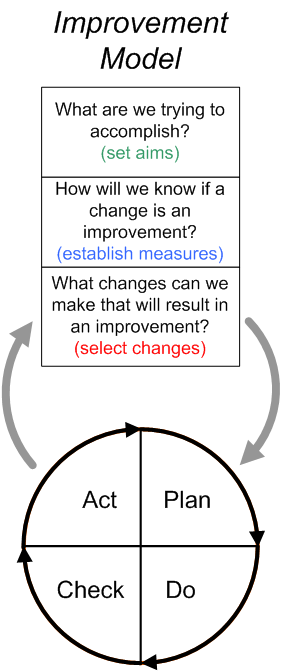Nolan’s 3 Questions for Improvement…and more!
What are some of the most lasting and useful things you have learned…things you find you can apply over and over through the years and they just keep working? It might be a concept, a technique, or a key piece of information. Look in the top drawer of your own professional tool kit and I’ll bet you’ll notice something in common. Many of the best tools work well in a variety of different applications. This versatility is part of what makes them so useful. I have found this to be true with some of the tools and concepts I’ve learned in the field of Quality Improvement, including one of my own favorites, Nolan’s Three Questions.
Dr. Thomas W. Nolan, a statistician, author, and consultant, gave us a framework for process improvement in the form of three simple questions:
1) What are we trying to accomplish?
2) How will we know that a change is an improvement?
3) What changes can we make that will lead to improvement?
Nolan recommended that those working in quality improvement should know, or determine, the answers to these three questions in order to ensure the efficiency and effectiveness of their work, which in turn should follow the Plan-Do-Check-Act (PDCA) Cycle (see diagram). Indeed, I’ve found the exercise of answering these three questions to be an excellent tool in beginning any improvement effort, and they are very effective in diagnosing why an existing effort has stalled. However, I’ve also found them to be a useful construct for other work, including:
- - Targeting research efforts
- - Organizing feasibility studies and business plans
- - Refining dashboards and balanced score cards
- - Adding clarity to strategic initiatives
If you’ve not had a chance to apply Nolan’s Three Questions, give it a try. Let me know if I can help. It is just one of many tools from the quality field that you might find helpful in both quality improvement as well as in other work. Just as every leader needs to master the basics of finance or marketing, knowledge of quality improvement fundamentals has become another requirement in today’s organizations. You can learn more about quality improvement tools, principles, and application from the American Society for Quality.
Jeff
